
Introduction
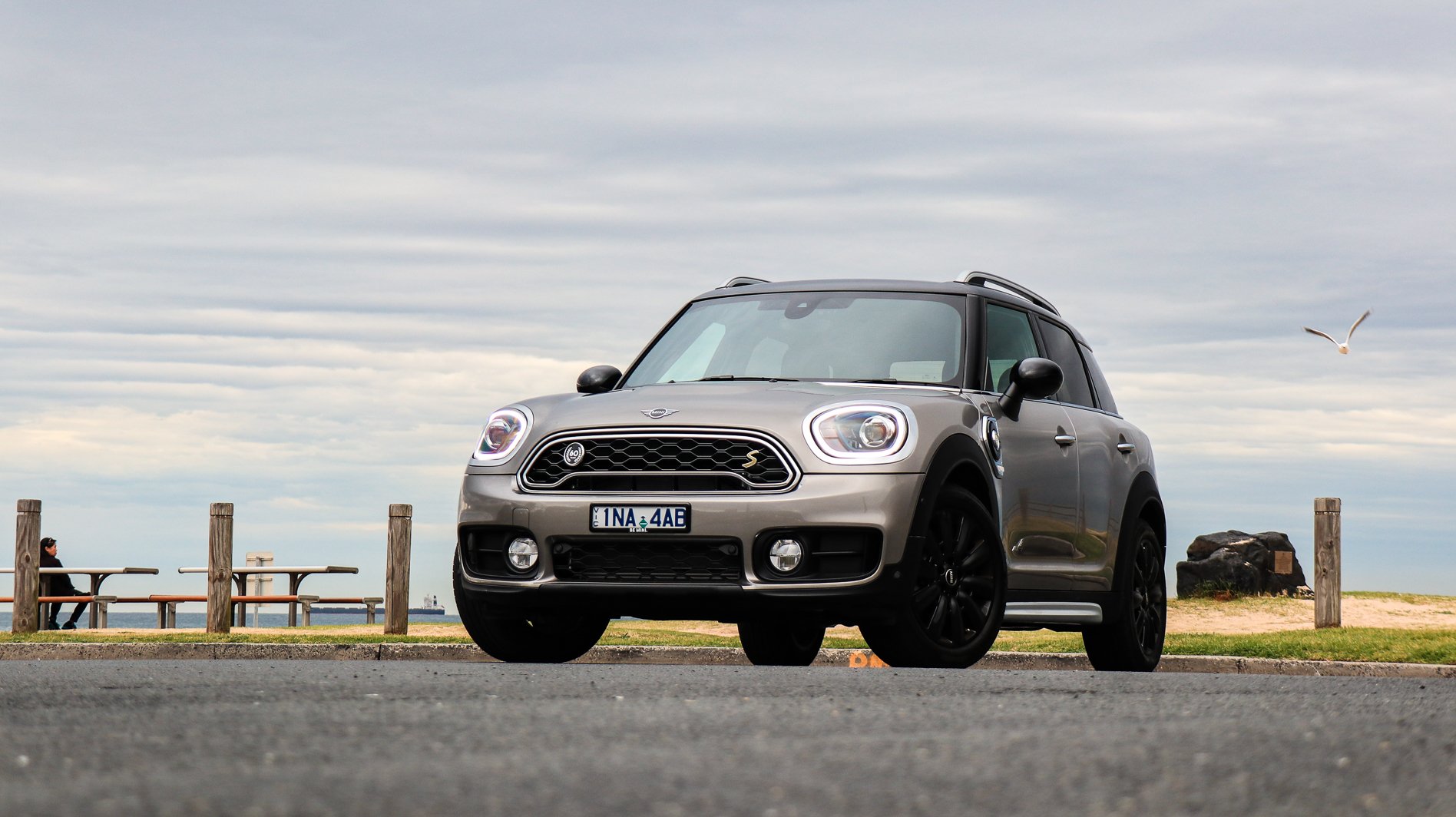
“There is no reason that this car can’t be a success in Australia, or in any other territory around the world,” a bullish Mini boss told me at the Geneva motor show in 2017.
The car in question is the Mini Countryman Hybrid, which uses the familiar if unusual form of the Mini brand’s biggest car to push into the burgeoning petrol/electric hybrid space.
Being a part of the BMW empire means that the still-British brand can access technology that a smaller player may miss out on, but it’s still able to package it in a less conventional way.
The five-door, five-seat, all-wheel-drive SUV is considered to be a small SUV and the hybrid variant joins a five-strong line-up here in Australia.
Style
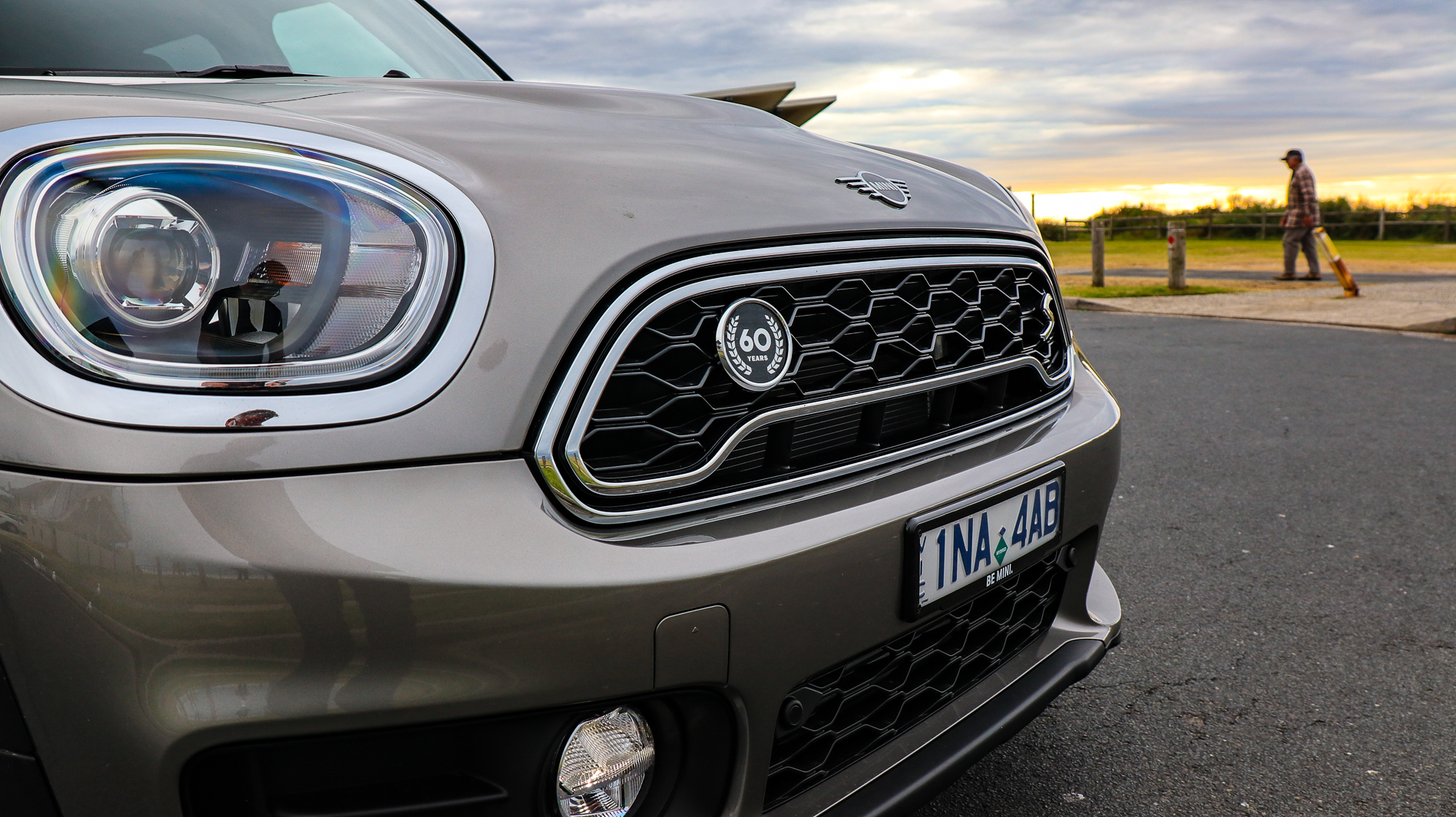
While the Mini Countryman undoubtedly shares its DNA with its smaller siblings – as well with its 1960s spiritual ancestor – it’s taken the notion of a Mini to the farthest reaches of credulity… and how it qualifies as a small SUV is simply beyond me.
The round headlights have morphed into ovaloid LED units, while the bulbous front guards barely sit proud of the bonnet line.
The stepped glass sizing from front to rear jars a little, but the short overhangs and bluff nose/tail treatments hark back to Minis of old.
Inside, the large circular multimedia screen – once the location of the speedo in the classic Mini – carries over, as do the aircraft-style toggle switches. No digital dash here, though, with a very traditional round speedo taking pride of place.
Mini’s done a good job of not going overboard with the greenwashing of the Countryman hybrid, too. There’s no missing the large, overly chromed charging port on the front left guard, but otherwise its yellow-tinged badging is subtle enough.
Price and features
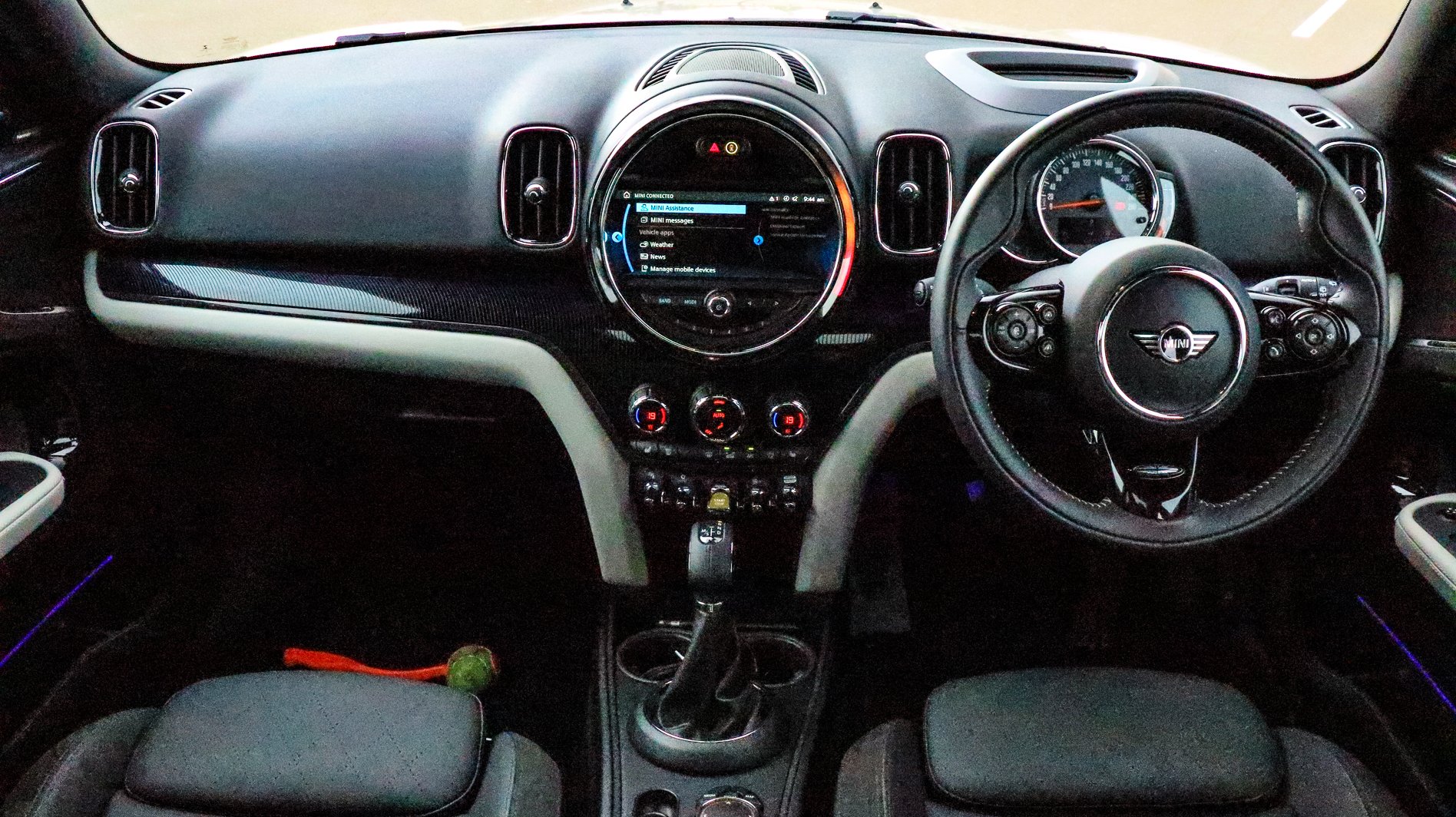
Coming in a $57,200 before on-road costs, the AWD Hybrid undercuts the range-topping JCW by $2700. Despite all the noise around the sector, it actually doesn’t have many natural enemies yet, with hybrids from Range Rover and Volvo still inbound.
The new Lexus UX250h is currently, at $56,950 before on-roads, its most logical foe.
The Countryman Hybrid uses the same 1.5-litre three-cylinder turbocharged engine that appears in the $41,900 Countryman, with its 100kW and 220Nm supplemented with a 65kW/165Nm electric motor on the rear axle.
There’s a 7.6kWh lithium-ion battery under the floor that can be charged in just over three hours from your regular old power point, and which gives the Countryman Hybrid a claimed EV range of 40km up to a top speed of 125km/h.
Spec-wise, it’s adequate without being overwhelming. It scores LED headlights, 18-inch rims, heated external mirrors, mock leather seats, dual-zone climate control with rear vents, the aforementioned 8.8-inch multimedia system with smartphone mirroring, wireless phone charging and an electrically operated tailgate.
Seats are manually operated and not heated, and there are automatic lights and wipers. The rears are 40/20/40 split/fold style, and there are two ISOFIX baby seat mounts, as well.
Size
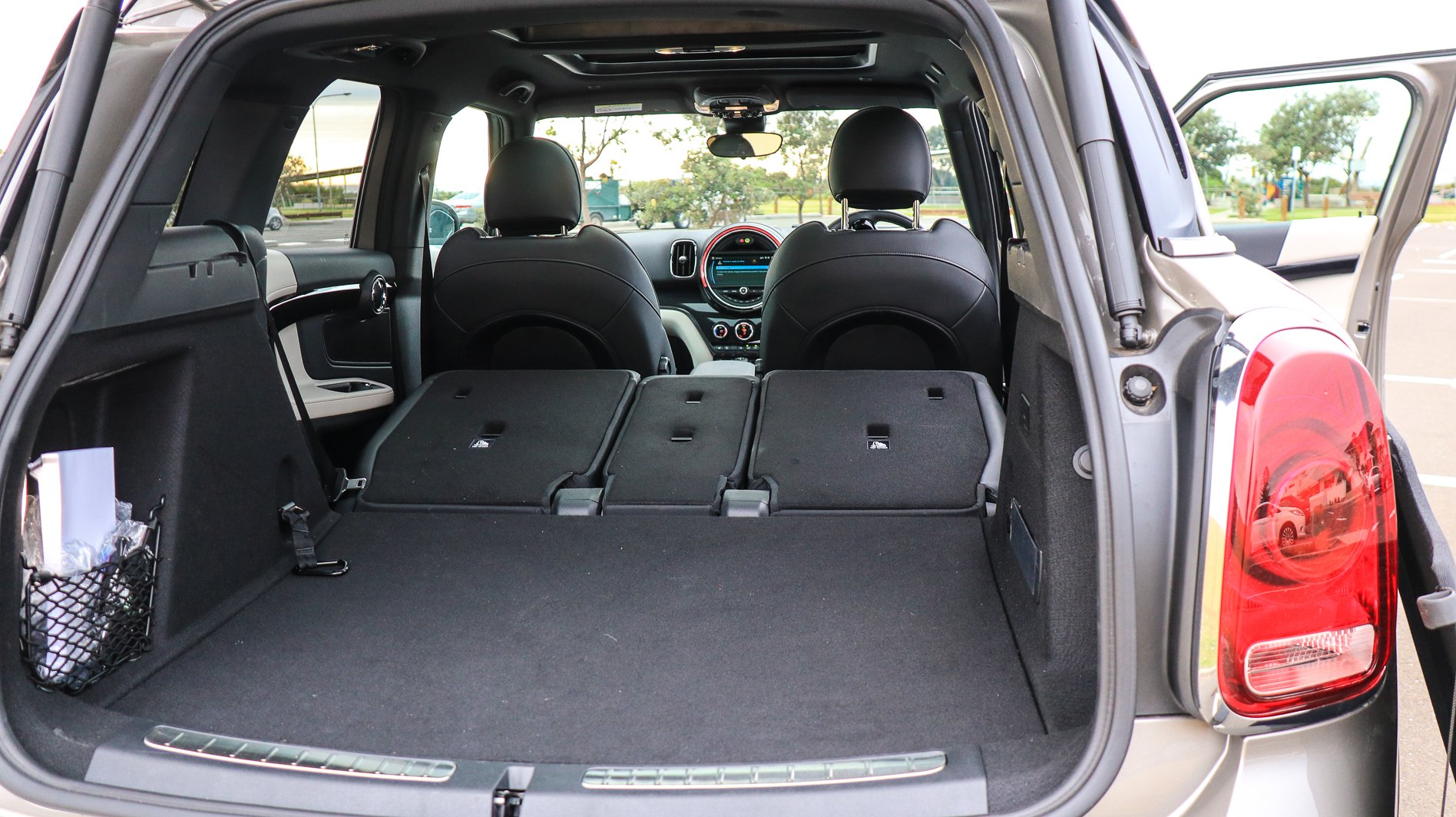
Coming in at 4299mm in overall length, the Countryman – which is based on the same platform as the BMW X1 – is just 25mm longer than the Mazda CX-3, despite appearing to be a much larger car.
It’s also a massive 205mm longer than the last Countryman, and 137mm wider to boot.
It does lose 45 litres of boot space over its stablemates with 405 litres available behind the seats, though, thanks to the electric gubbins under the boot floor. It does redeem itself, though, with a decent 1275 litres of space revealed when the seats are dropped.
The space itself is good; the door opens wide to reveal a largely rectangular shape without the room-robbing roof drop of other small SUV designs, while the laid-out seats form a reasonably flat, gap-free loading area. A useful cargo net holds smaller items, and there are plastic bag hooks and a 12-volt socket in the space, as well.
Safety

There’s plenty of safety built into the Mini, with 0-140km/h AEB as well as low-speed crash mitigation that can spot a pedestrian, forward collision warning and speed limit info. Six airbags are also fitted as standard, along with front and rear parking sensors and a rear-view camera, earning the Countryman a maximum five-star ANCAP mark.
Warranty and running costs
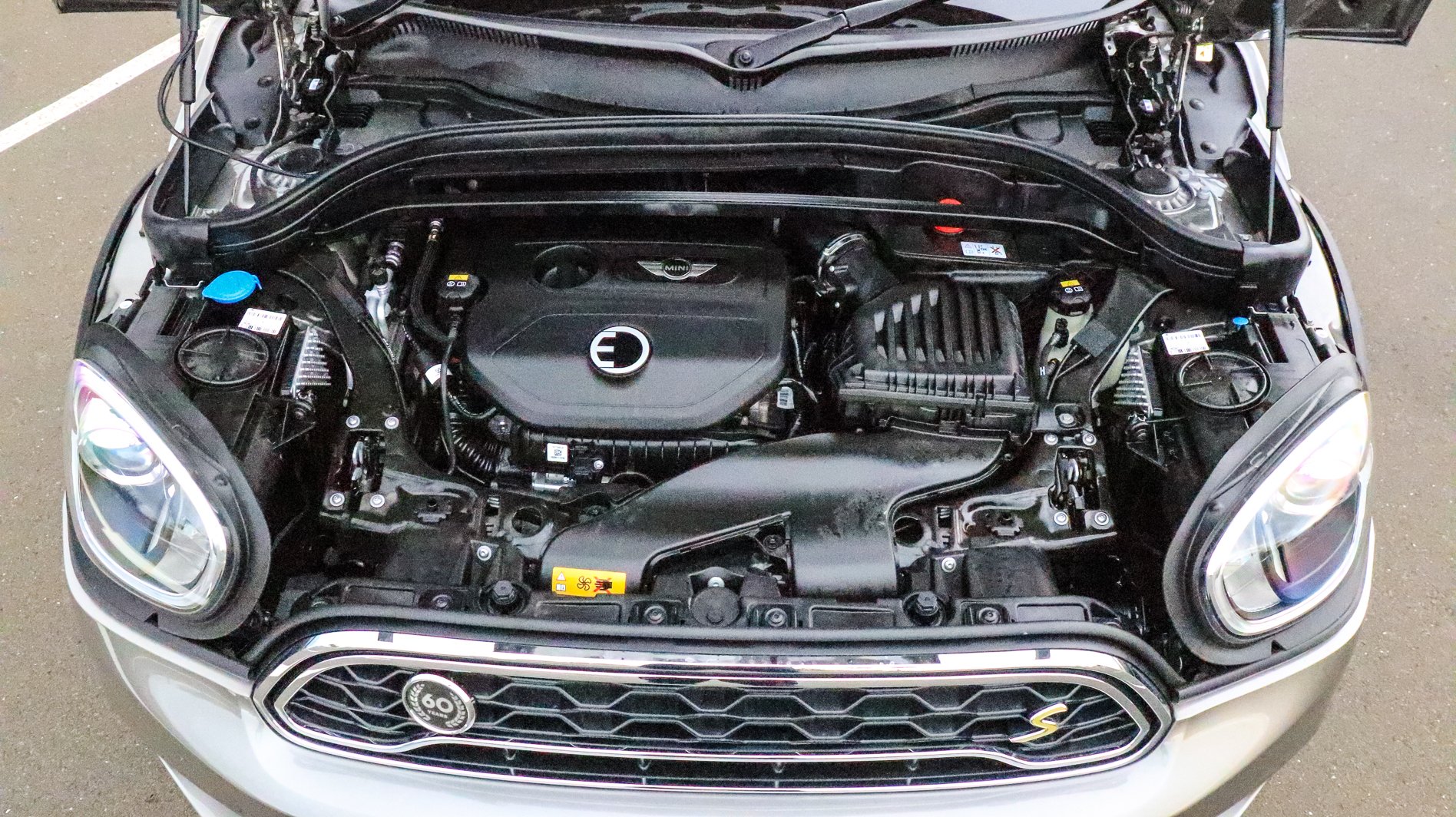
Sadly, Mini only offers a three-year warranty, though there is no limit on kilometres. As with BMW, Mini doesn’t recommend a service interval for its cars, instead telling customers to use the on-board condition-based service system that will tell them when the car needs some TLC.
Upfront service packages can be purchased for the Countryman Hybrid, as well. Based on a five-year/80,000km limit, the Basic package costs $1425, while the Plus – which includes items like brake rotors and pads, clutch disc and plate and windscreen wipers – costs $3685.
When it comes to fuel economy, Mini rates the Hybrid at just 2.4 litres per 100km on the combined cycle, thanks to the electric motor.
Comfort
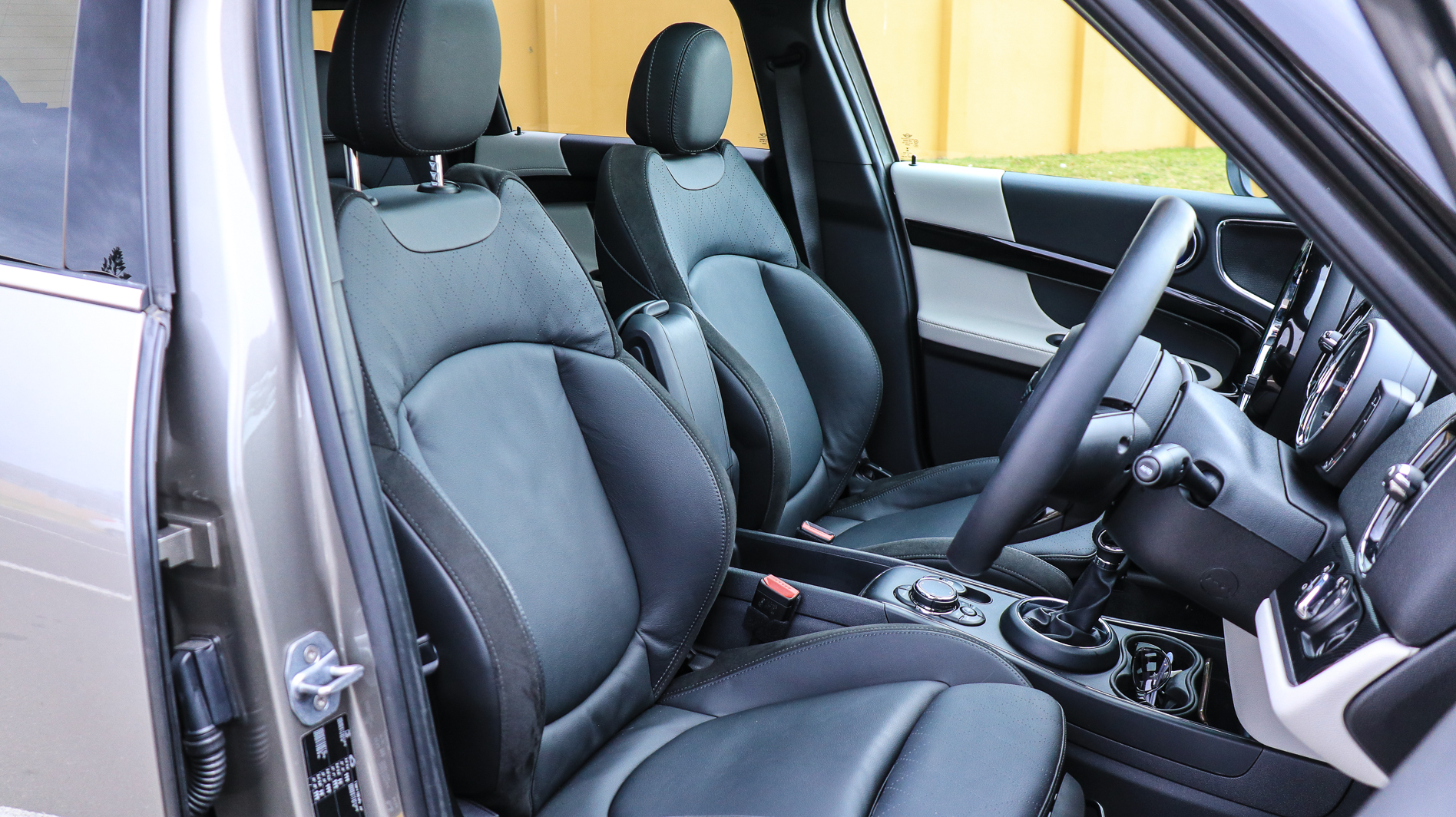
Of all of the small SUVs in the mix at present, more than one of them is comprised in terms of interior space, particularly for second-row passengers.
The Countryman is by far the largest Mini ever made, and that space is put to good use. A sliding second row allows a few centimetres of vital flexibility, while headroom all round is great.
The extra width, too, means that the Countryman’s back seats are no longer a threat of punishment for naughty kids. There are charge points and air vents back there, as well as an armrest and cup holders.
Front seat space is decent, too, with the smaller diameter steering wheel and low-slung seats shrinking the Countryman around the driver.
On the road
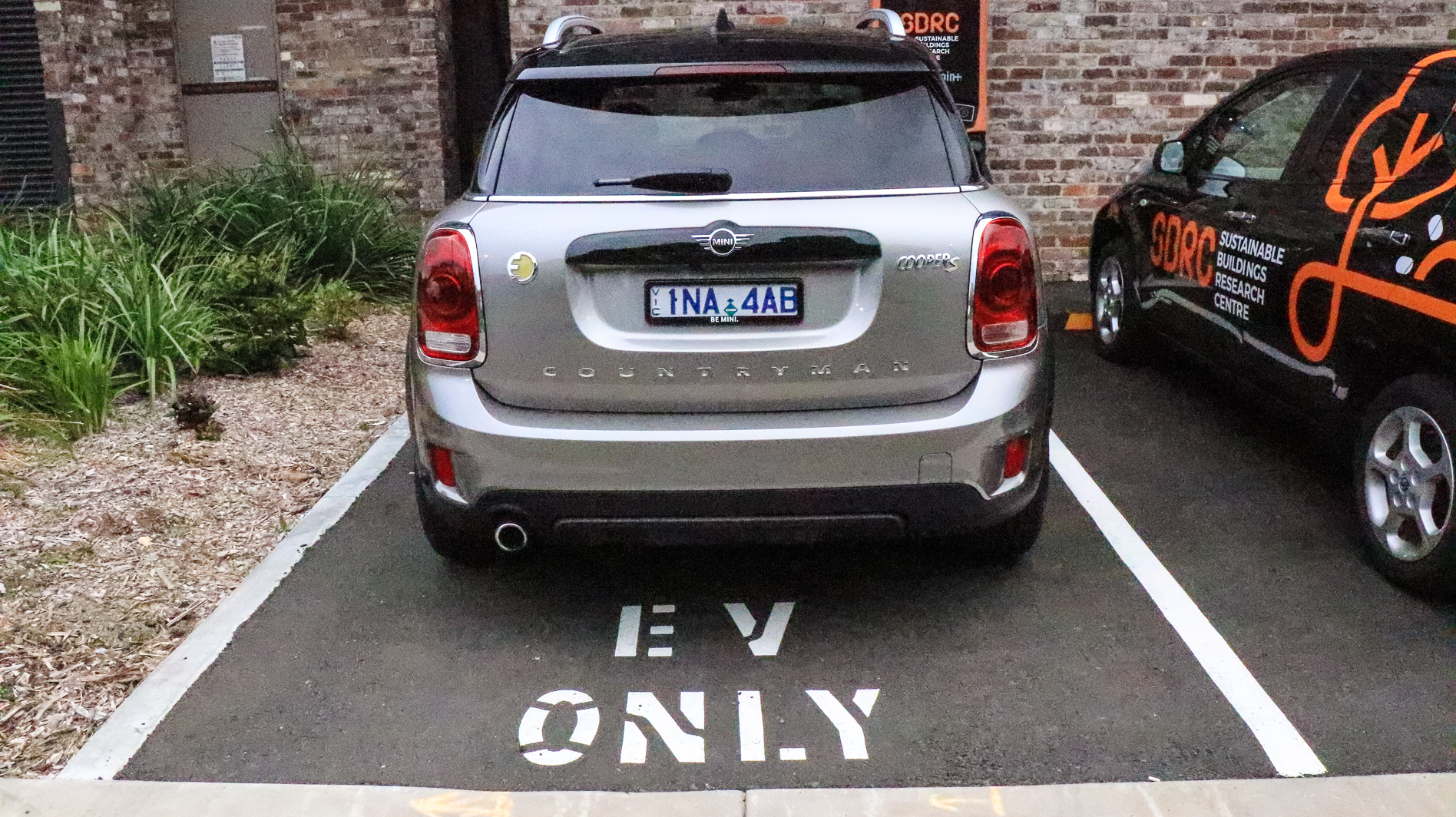
If there’s a word to describe the Mini Countryman Hybrid, it’s spritely. In fact, it’s probably the most effective and most integrated hybrid system I’ve yet driven.
The electric motor’s torque is available right off the bat, giving the 1790kg SUV a genuine, seamless and consistent shot in the kiester when you’re darting in and out of traffic.
Its pace feels effortless and unrushed, accompanied by a calm, quiet demeanour that actually takes a little getting used to. It feels a lot bigger and nicer than a small SUV has a right to.
Its suspension tune also contributes here; the ride and handling balance of the Countryman is really very good, even on the stock 18-inch rims and low profile run-flat tyres.
It’s technically an all-wheel-drive even though the axles are connected by cables, not propshafts, and Mini has done an excellent job of calibrating the relationship between the two.
I suspect there’s a little bit of overspeeding on the rear axle to keep the front end tucked in, but regardless, petrol and electrons play very nicely together.
Its handling is helped, no doubt, by having a big chunk of heavy battery slung low in the car, but it deals with broken urban byways and lumpy inner-city streets as well as it cruises well-maintained b-highways.
When it comes to its electric credentials, 40km of range may sound like a bit if school, town and work are close by… but with a 160km round daily commute, I reckon the hybrid’s talents are a bit wasted on someone like me.
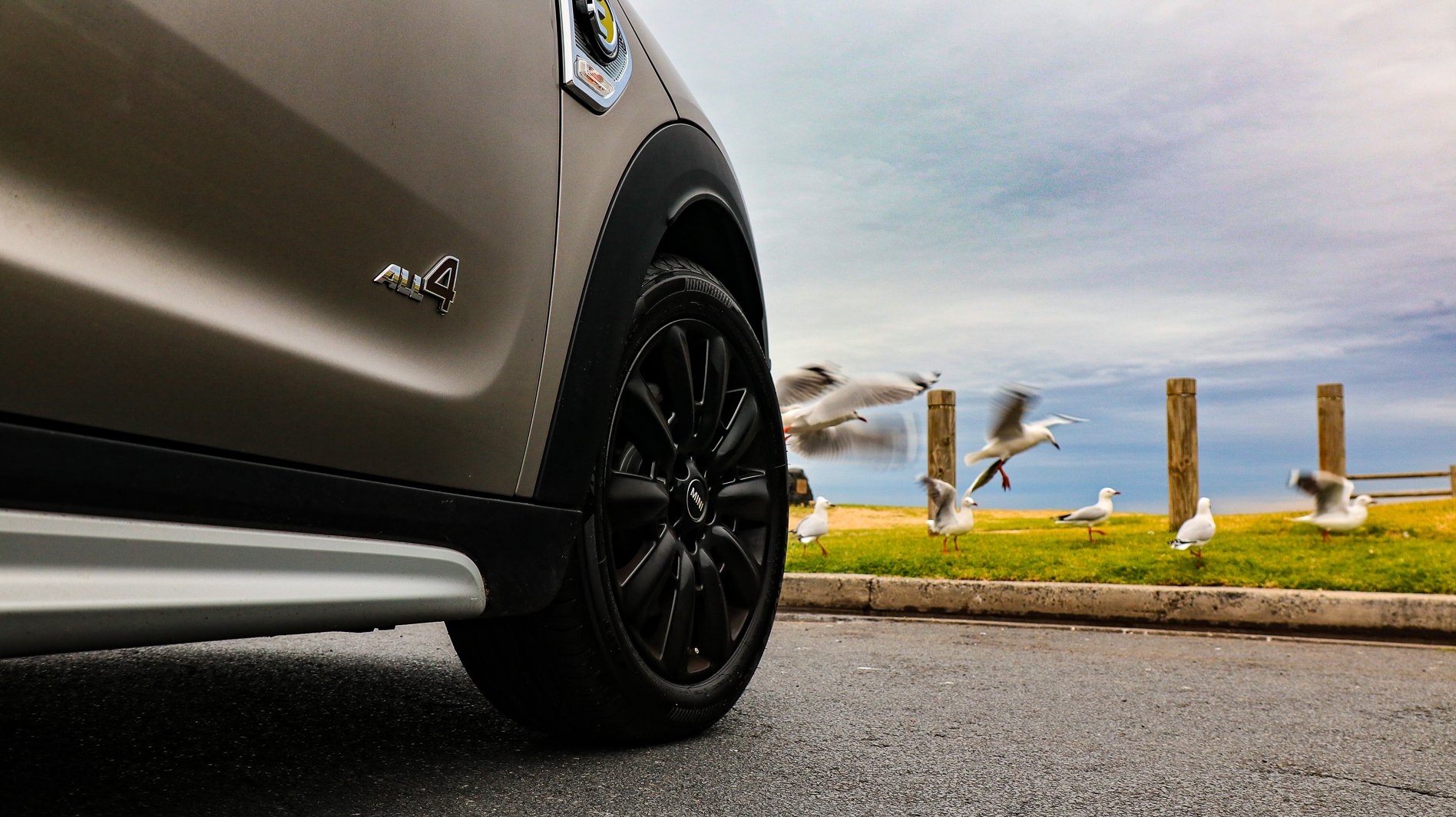
The Mini offers a full EV mode, an auto mode that manages both powertrains and a max-battery-save mode in its driving parameters. The latter function is designed so charge can be kept in the battery – which also gets recharged on-the-go via regenerative braking and the petrol engine – for when it’s needed most.
If a city introduces an EV-only zone, for example, that’s where the Mini will shine; drive up to it with petrol power and switch straight into EV mode.
Its straight electric mode is as quick and quiet as expected, but as with all electric cars, the maximum range is really only a serving suggestion, especially if hills and speed are involved.
It was a bit hard to get a maximum EV range score out of the Mini, as the petrol engine would cut in to save the day whenever range dropped to about 10km, but I consistently covered at least 30km on three occasions on EV power alone.
In the course of my commute, though, the claimed fuel economy figure came and went in the first ten minutes of highway driving. Over a pair of 150km loops, I recorded dash-indicated figures of 8.8 and 9.1 litres per 100km respectively, making a bit of a mockery of Mini’s 2.4L/100km claim.
Charging the Mini back up is surprisingly easy and relatively quick, thanks to the smallish battery. It took bang-on three hours and 20 minutes to recharge from my garage socket to 80 per cent, and around five hours and 30 minutes to reach full charge.
Mini will sell you a wall box that can deduct an hour from those times, but we reckon the company should be chucking one in the boot of every car it sells.
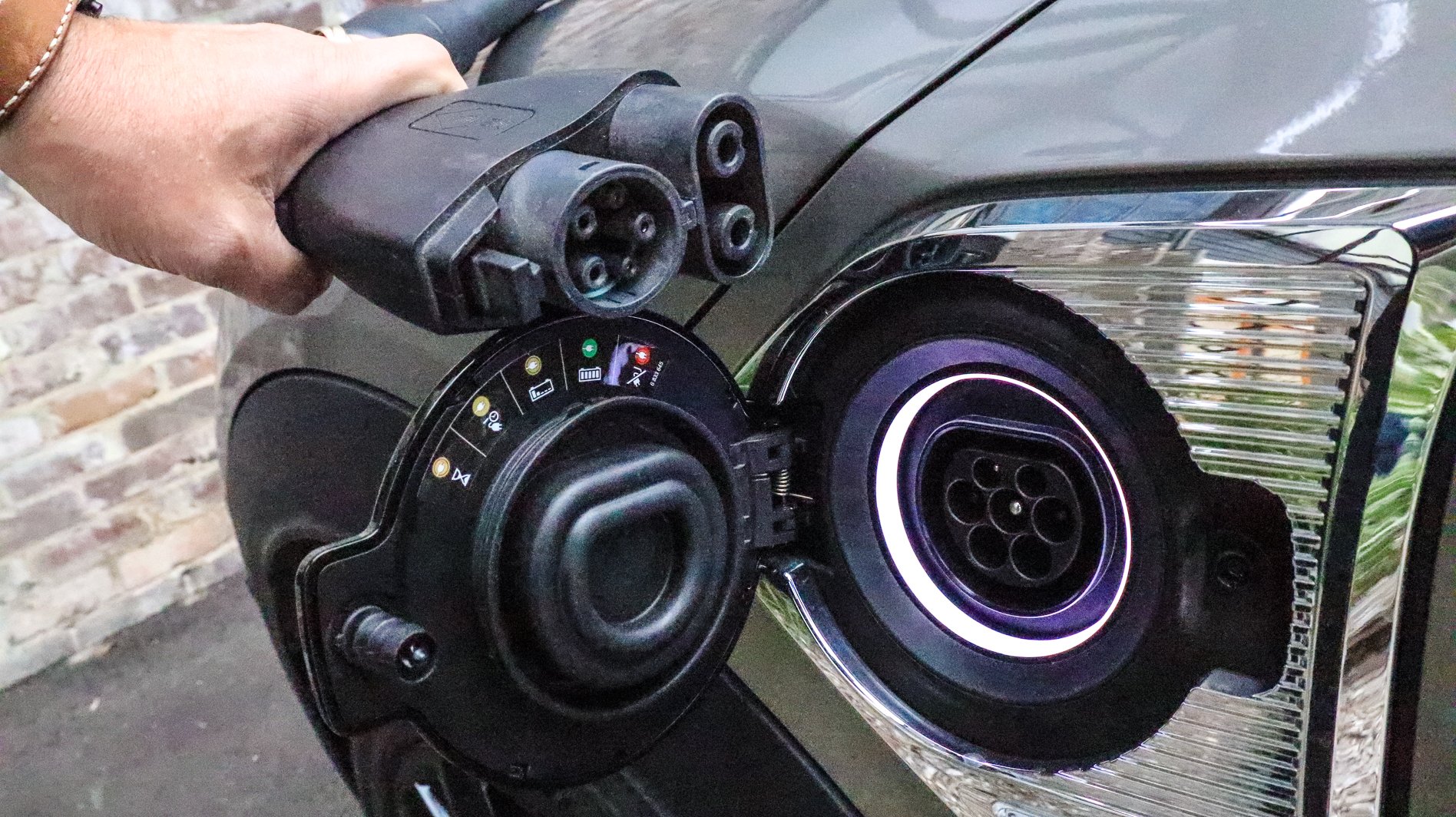
I did try to top off the Mini at a couple of EV ‘pumps’ near my house, but I was foiled but non-matching plug types (above) – which is really something that everyone bringing in EVs and building charging stations needs to be across.
Mini claims a combined range of 498km from both the 35-litre petrol tank and the battery, but our 425km test included a few recharges.
Verdict
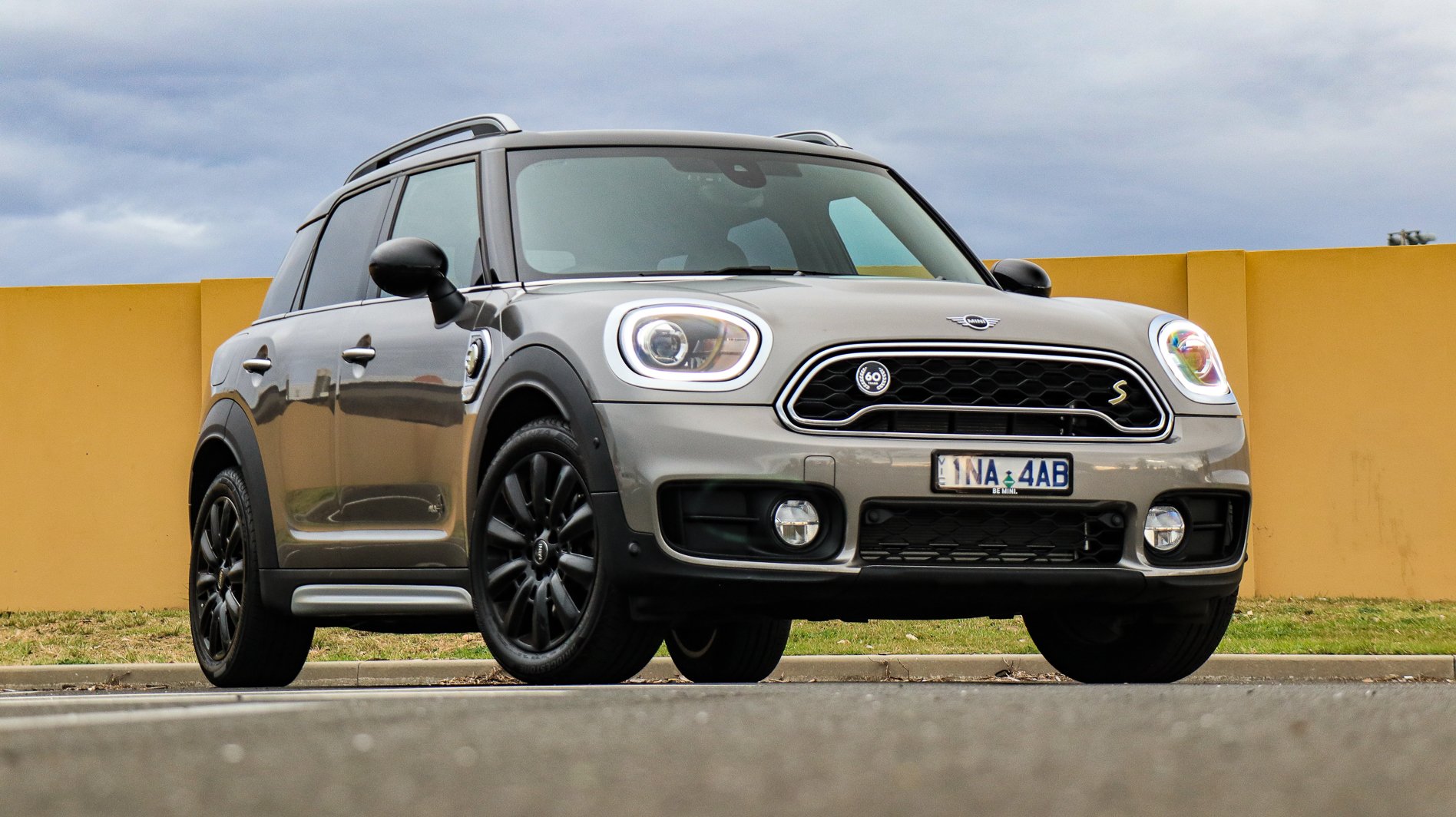
The Mini Countryman Hybrid does exactly what it says on the tin; it provides a decent enough electric-only range that an inner-urban dweller with access to charging at work and home may never need to use the petrol engine.
And if the spark does go out, the little three-cylinder engine will save the day.
However, it’s more of a petrol drinker than the company will have you believe, and if your driving habits see you wander outside the city limits more often than not, then perhaps the diesel Countryman with its 5.2L/100km claim is a more sensible choice.
A greater EV range might square up the ledger a bit, but nonetheless, the Mini Countryman hybrid’s performance behind the wheel should be enough to convince doubters that there is a place for the plug-in hybrid, even as we charge (ha!) towards an electrified future.



